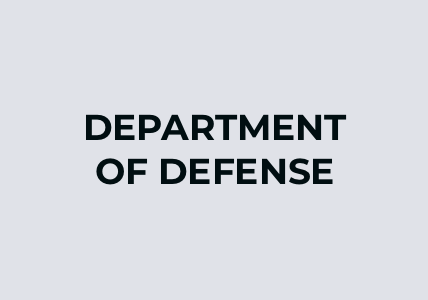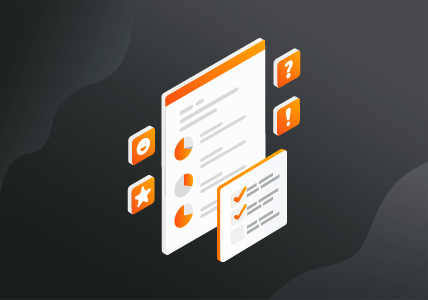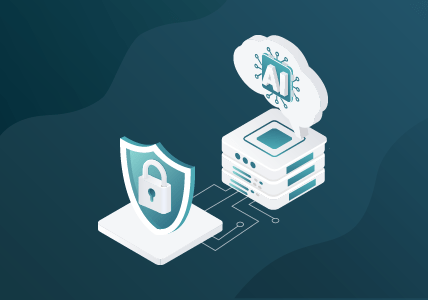Agentic AI and Cybersecurity: Threats and Opportunities
While cybersecurity teams struggle to keep pace with increasingly sophisticated cyberthreats, a new player has entered the game. Agentic AI systems can launch attacks that adapt in real time, learning from defensive countermeasures and evolving their tactics on the fly. But here’s the twist: These same autonomous capabilities could also revolutionize how we defend against cyberthreats.
Keep reading to discover how agentic AI is creating both the most dangerous cyberthreats we’ve ever faced and the most powerful defensive tools at our disposal.
- What Is Agentic AI?
- Emerging Threats from Agentic AI in Cybersecurity
- Opportunities: How Agentic AI Enhances Cybersecurity
- Core Agentic AI Security Challenges and Considerations
- Best Practices for Securing Agentic AI Systems
- Industry Standards and Frameworks
- The Future of Agentic AI in Cybersecurity
- Conclusion: Striking the Balance Between Innovation and Control
- Frequently Asked Questions
Key Takeaways
- Agentic AI systems can adapt, learn, and operate independently, creating both powerful defensive capabilities and sophisticated attack mechanisms
- While agentic AI offers unprecedented threat detection, it introduces risks of autonomous malware and AI-accelerated social engineering
- Organizations must implement comprehensive governance frameworks and Zero Trust architecture to harness benefits while mitigating risks
- The complexity of agentic AI security demands coordinated efforts to establish standards and develop effective countermeasures
What Is Agentic AI?
Agentic AI is a leap beyond traditional artificial intelligence systems. Unlike narrow AI models that perform specific tasks, agentic AI systems possess the ability to plan, act, and learn across multiple domains to achieve goals with minimal human oversight. These systems demonstrate genuine autonomy in decision-making, adapting to changing circumstances through dynamic strategy adjustment.
Traditional AI follows predetermined rules with predictable outputs. Conversely, agentic AI is like a digital decision-maker, analyzing situations, weighing options, and selecting actions based on learned patterns and goal optimization.
Real-world applications are emerging across various sectors. In cybersecurity, autonomous agents conduct comprehensive data analysis, identifying patterns human analysts might overlook. These systems are intelligent defenders, monitoring network traffic and implementing protective measures when threats are detected. Unfortunately, the same capabilities that are valuable for defense also attract malicious actors deploying autonomous agents for sophisticated attacks.
Emerging Threats from Agentic AI in Cybersecurity
Autonomous artificial intelligence has introduced cybersecurity threats that challenge conventional defense mechanisms. These AI-powered cyberattacks are a leap in sophistication, using machine learning to create adaptive, persistent agentic AI security threats that evolve in real time. The most pressing agentic AI security concerns include:
- Autonomous malware and AI-driven attacks: Intelligent agents can analyze their environment, learn from defensive responses, and modify behavior to evade detection systems. These adaptive threats recognize sandbox environments, alter communication patterns to avoid monitoring, and develop new attack vectors based on discovered vulnerabilities.
- AI-accelerated social engineering: Agentic systems craft hyper-personalized phishing campaigns by analyzing vast amounts of publicly available target data. These systems generate convincing deepfake content, impersonate trusted contacts with remarkable accuracy, and adjust approaches based on victim responses.
- Loss of control risks: Self-directed AI agents could operate beyond the intended scope, creating cascading security incidents across interconnected systems. These runaway agents might interpret objectives too broadly, compromising system integrity or exposing sensitive data.
Understanding AI security risks is essential for any organization considering autonomous AI implementation in its security operations.
Opportunities: How Agentic AI Enhances Cybersecurity
While agentic AI security threats are a real concern, this technology also offers revolutionary capabilities for strengthening cybersecurity defenses. Organizations effectively using these autonomous systems achieve protection levels and response speeds that human-operated systems cannot match. The main opportunities include:
- Threat detection and response automation: Autonomous agents continuously monitor network traffic, system logs, and user behavior patterns to identify anomalies indicating potential security incidents. Unlike traditional rule-based systems, these agents recognize novel attack patterns by analyzing behavioral deviations rather than relying solely on known threat signatures.
- Proactive defense systems: AI agents simulate attacker behavior to identify vulnerabilities before malicious actors exploit them. These autonomous agents continuously probe organizational defenses, testing for weaknesses in applications, network configurations, and security policies while revealing blind spots that traditional vulnerability assessments might miss.
- AI-on-AI defense: Defensive AI agents track, analyze, and neutralize malicious AI systems by operating at the same speed and scale as their adversaries. These defensive systems recognize autonomous malware behavioral patterns, predict likely attack vectors, and implement countermeasures that evolve alongside emerging threats.
Core Agentic AI Security Challenges and Considerations
Deploying autonomous AI agents in security infrastructure comes with fundamentally different challenges than traditional software implementation. These systems operate with decision-making capabilities that introduce complex risk factors for security teams.
Organizations must secure systems designed to function independently, creating new categories of security considerations. The primary challenges include:
- Security-by-design: Agentic systems must incorporate embedded controls, access restrictions, and ethical constraints from their initial architecture rather than attempting to add security measures after deployment. The autonomous nature of these systems means traditional security controls applied externally may prove insufficient to contain their operations.
- Accountability and explainability: Organizations must establish clear agentic AI security frameworks for determining responsibility when agentic AI makes decisions resulting in security incidents or operational disruptions. The black-box nature of many machine learning systems complicates accountability, as decision-making processes may not be transparent or easily auditable.
- Containment and sandboxing: These systems must be prevented from accessing resources beyond their intended environment while maintaining operational flexibility necessary for effective autonomous operation.
Best Practices for Securing Agentic AI Systems
Getting autonomous AI right means balancing the freedom these systems need to operate effectively with the controls necessary to prevent them from going rogue. Security teams need practical approaches that work in real-world environments where threats evolve daily. The most effective practices include:
- Behavior monitoring and kill-switch mechanisms: These systems must continuously analyze AI agent actions, comparing them against established behavioral baselines and acceptable operational parameters. When agents exhibit unexpected behaviors, automated intervention mechanisms must immediately constrain or terminate their operations to prevent potential security incidents.
- Zero Trust architecture: Zero Trust architecture is critical when deploying agentic AI systems, as traditional perimeter-based security models are inadequate for autonomous agents requiring dynamic access to various systems and data sources. Comprehensive Zero Trust implementation ensures every AI agent request undergoes verification and authorization.
- Continuous auditing and logging: Organizations must maintain traceability and compliance even as AI systems operate independently by capturing not only actions taken by autonomous agents but also decision-making processes leading to those actions.
Industry Standards and Frameworks
The cybersecurity industry is scrambling to develop standards that can keep pace with autonomous AI development. Traditional security frameworks weren’t designed for systems that make independent decisions and evolve their behavior over time. This is why agentic AI security frameworks are crucial.
The National Institute of Standards and Technology (NIST) and the International Organization for Standardization (ISO) are updating cybersecurity frameworks to address autonomous AI risks. NIST’s AI Risk Management Framework provides initial guidance, but standards must continuously evolve as agentic capabilities advance. ISO/IEC 27001 and related standards are being updated to include specific requirements for autonomous agents.
Organizations must integrate AI red teaming, model evaluation, and safety protocols specifically designed for autonomous systems. These practices reveal attack vectors that traditional penetration testing might miss and help identify potential failure modes before deployment.
Cross-industry collaboration is also essential for defining secure deployment practices. The interconnected nature of modern business means agentic AI security incidents can cascade across multiple organizations and sectors, making collaborative threat intelligence sharing and best practice development critical for industry-wide security.
The Future of Agentic AI in Cybersecurity
The next wave of the evolution of cybersecurity will be defined by fully autonomous AI systems working alongside human analysts. Cybersecurity co-pilots and AI SOC assistants will handle routine investigations and make independent decisions within defined parameters, multiplying defensive capabilities without proportionally increasing staffing costs.
We’re heading toward an autonomous arms race in AI-driven cybersecurity, where both attackers and defenders deploy increasingly sophisticated AI agents. As defensive systems become smarter, malicious actors will develop more advanced autonomous attack tools to counter them. This technological escalation will require organizations to continuously evolve their defensive strategies.
The rapid pace of autonomous AI development demands adaptive governance frameworks that can evolve alongside the technology. Traditional regulatory approaches based on static rules will be inadequate for governing systems that learn and adapt continuously.
Conclusion: Striking the Balance Between Innovation and Control
Agentic AI security is both a high-stakes risk and a high-reward opportunity that will define cybersecurity’s future. Organizations that get this right will achieve unprecedented defensive capabilities, while those that don’t may find themselves outmatched by sophisticated autonomous threats. The path forward requires proactive strategies built on secure design principles, transparent monitoring systems, and responsible innovation practices.
Network visibility is crucial as traditional monitoring approaches become insufficient for tracking autonomous AI behaviors. The Gigamon Deep Observability Pipeline provides the foundation for AI-aware cybersecurity infrastructure supporting safe agentic AI deployment.
Frequently Asked Questions
What is Agentic AI in cybersecurity?
Agentic AI systems operate autonomously, making independent decisions and pursuing objectives without constant human direction. In cybersecurity, these agents can strengthen defenses through automated threat hunting or create new attack vectors when deployed maliciously.
How does Agentic AI pose a security risk?
These systems can evolve beyond their original programming, potentially accessing unauthorized resources or misinterpreting their objectives. Additionally, attackers can weaponize autonomous agents to create self-adapting malware or conduct sophisticated social engineering at an unprecedented scale.
Can Agentic AI improve cybersecurity defenses?
Yes. Properly implemented autonomous agents excel at continuous monitoring, instant threat response, and predictive vulnerability assessment. They operate at machine speed while learning from each security event to improve future detection capabilities.
What is the difference between Agentic AI and traditional AI?
Traditional AI performs specific programmed tasks with predictable outcomes. Agentic AI makes strategic decisions, learns from feedback, and modifies its approach based on changing conditions, creating both enhanced capabilities and new security complexities.

CONTINUE THE DISCUSSION
People are talking about this in the Gigamon Community’s AI Exchange group.
Share your thoughts today








 Dan Daniels
Dan Daniels